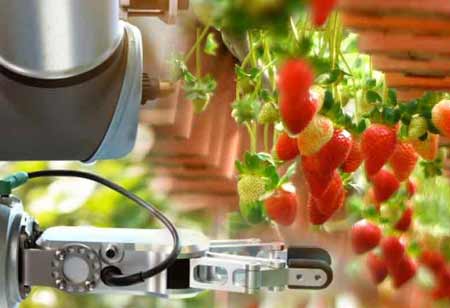Thank you for Subscribing to Agri Business Review Weekly Brief
Empowering Agricultural Sector With GIS
GIS in agriculture is not a new occurrence anymore. The agricultural sector is the backbone of the rural economy around which socio-economic privileges

By
Agri Business Review | Sunday, August 07, 2022
Stay ahead of the industry with exclusive feature stories on the top companies, expert insights and the latest news delivered straight to your inbox. Subscribe today.
Technological innovations and geospatial technology help create dynamic and competitive agriculture which is protective of the environment and capable of offering excellent nutrition to the people.
FREMONT, CA: GIS in agriculture is not a new occurrence anymore. The agricultural sector is the backbone of the rural economy around which socio-economic privileges and deprivations revolve.
Any change in its structure can have a corresponding impact on the existing pattern of social equality. No economic reform strategy can succeed without sustained and broad-based agricultural development, which is critical for raising living standards, alleviating poverty, assuring food security, generating a buoyant market for expanding industry and services and making an essential contribution to the national economic growth.
The future growth in agriculture must arrive from new technologies which are not only cost-effective but also in conformity with the natural climatic regime of the country; technologies relevant to rain-fed areas especially; continued genetic advancements for better seeds and yields; data advancements for better research, better outcomes, and sustainable planning; bridging the break between knowledge & practice; and informed land employ resource surveys, efficient management practices and sustainable use of natural resources.
Sustainable agricultural production is based on the judicious use of natural resources (soil, water, livestock, plant genetics, fisheries, forest, climate, rainfall, and topography) in proper technology management under the prevailing socio-economic infrastructure. Technology is essential in developing countries' rapid economic growth and social transformation.
Agricultural mapping
Technological innovations and geospatial technology help create dynamic and competitive agriculture which is protective of the environment and capable of offering excellent nutrition to the people. While natural inputs in farming cannot be managed, they can be better understood and managed with GIS applications. GIS can substantially support effective crop yield estimates, soil amendment analyses and erosion identification and remediation. More precise and reliable crop estimates support reducing uncertainty.
A central problem in agricultural development is the requirement to increase productivity, employment, and income of poor segments of the agricultural population. By using GIS in agriculture, this situation can be considered.
GIS tools and online web resources assist farmers in carrying out crop forecasting and managing their agriculture production by employing multispectral imagery collected by satellites.
The capacity of GIS to analyze and visualize agricultural environments and workflows has proven to be very beneficial to those involved in the farming industry. For example, GIS can analyze soil data and determine where crops should be planted and how to maintain soil nutrition so that the plants benefit best.
GIS in agriculture aids farmers in achieving increased productivity and reduced costs by enabling better management of land resources. As a result, the risk of marginalization and vulnerability of small and marginal farmers, who constitute about 85% of global farmers, also decreases.
Agricultural Geographic Information Systems employing Geomatics Technology allow the farmers to map and project current and future fluctuations in precipitation, temperature, crop output etc.
Agricultural mapping is gradually becoming crucial for monitoring and management of soil and irrigation of farmlands. It facilitates agricultural development and rural development. Accurate mapping of farmlands' geographic and geologic features enables scientists and farmers to create more effective and efficient farming techniques.
As farmers can take more corrective actions in the form of better utilization of fertilizers, treating pest and weed infestations, protecting the natural resources etc., we are bestowed with more and higher quality food production.
Smart farming
Sensors in fields, tractors and satellites high above farms are constantly collecting data. Advanced technologies can turn this data into information that farmers and land managers can use to make more informed and timely decisions. This, in turn, increases productivity and reduces environmental impacts.
Farming is getting smarter with the accessibility of advanced technologies like precision equipment, the Internet of Things (IoT), sensors and actuators, geo-positioning systems, Big Data, Unmanned Aerial Vehicles, robotics etc.
An idea in agriculture that is gaining wide popularity due to the excess of benefits it offers is precision agriculture. It allows farmers to collect timely geospatial information on soil-plant needs and prescribe and apply site-specific treatments to enhance agricultural production and protect the environment.
Precision agriculture relies on high technology tools that are more accurate, cost-effective and user-friendly. Global Market Insights has launched a market report recently, according to which, in 2024, the world's precision farming market size will reach $10 billion by 2024.
As the agricultural sector opens its arms to embrace new technologies, in times to come, we hope to see every platter to be filled with more nutritious food.





